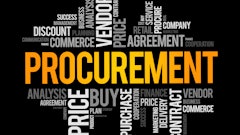
For the last 30 years, supplier performance has been managed with a focus on cost-based efficiency and contract performance, placing the emphasis on the numbers and contracts, which provides an important but finite opportunity to drive value.
However, the real strategic value comes from the relationship, which is typically the area of any engagement that lacks the system of baselined measurability.
Relationships aren’t drafted into contracts. They are difficult to quantify and measure as they naturally lack structure. Longer-term strategic value that comes from the quality of the customer-supplier relationship has been impossible to capture or measure and so contract performance and cost-based approaches have been prioritized, in turn further limiting the potential value of these relationships.
What’s more, challenges around supplier performance often have more to do with the customer (e.g. people, culture, process, contract) than they do the supplier. In the uncertain world in which we now operate, the power has shifted toward suppliers and becoming “customer of choice” is a critical goal for many organizations if they are to grow and succeed. Measuring value rather than savings is therefore the new imperative.
To effectively identify and capitalize on real opportunities for creating value inside today’s increasingly distributed and rapidly evolving relationship ecosphere, organizations now need to ensure they visibly measure the ongoing efficiency and productivity of their own output – just as traditionally they would their suppliers’.
By deploying an autonomous smart tech capability, not merely to manage suppliers, but equally to drive and supercharge customer output, organizations can now see holistically even in complex supply chain environments, what, where and how to drive their engagements forward. This is a key discipline that helps foster a healthy environment for innovation, which fuels the growth engine.
Collaborate to innovate
Of course, change laggards will remain in the slow lane and allow their vendors to silo innovate, with limited success. According to Gartner, more than 70% of sourcing and procurement professionals turn to suppliers for innovation, but if a customer sits back and does nothing to engage in the process, they’ll simply move more slowly and pay more. So instead, the advice for them is to join in, take some ownership, drive that engagement cadence and become experts at meaningful collaboration.
The seismic shift toward a more collaborative, digitally transformed landscape is accelerating. Tools are increasingly being designed to enable immersive, integrated consortia-based ecosystems. In future, it will simply not be possible to trade efficiently without taking the correct evolutionary steps - modern contracts, modern attitude, modern tech. Organizations that fail to evolve will struggle.
KPMG estimates that organizations spend on average 15-27% of total revenues on external suppliers, but that up to one-third of the negotiated value is lost over term due to poor relationship management.
So, if the organizations of tomorrow are better able to measure the strategic value of their supply chain relationships, they will be able to make better, quicker decisions that put them firmly ahead of the competition. What’s more, if they are openly evaluating and improving their own role within the relationship, their suppliers will feel more valued, trusting and will prioritize them for their best talent, ideas and solutions. It’s really win-win.
When suppliers invest in a customer relationship and it’s clear from that customer that they want to be customer of choice, true collaboration can start to take place. Suppliers still want to be supplier of choice of course and a healthy and fruitful dynamic emerges when each party feels equally valued. This is when the opportunities are likely to be both numerous and lucrative.
In fact, according to a McKinsey survey, companies that regularly collaborated with suppliers demonstrated higher growth, lower operating costs and greater profitability than their industry peers.
It’s time to step out of the confines of measuring suppliers based on contracts, uncover the hidden strategic value that sits dormant within key relationships, realize true collaboration and embrace the future of supplier relationship management. Once the intention and enthusiasm for this new paradigm is ignited, it can quickly become a reality, as the tools to facilitate it are ready and waiting.
Walking the talk
Tech experts build best-in-breed software that can complement any other platform in the ecosystem, and that integrates easily and simply. Even more reason that practitioners learn how to be experts in collaboration. Doing so is more than a nice to have, and drives better returns through both top and bottom lines.
Tech experts and practioners are together building landscapes that work in partnership, in consortia. Everything about the way they engage – be it services or software – says that they are better together. They are breaking down silos, and constantly looking for areas to join together as these represent opportunities to create even more value.
So, it stands to reason that collaborative engagement at every level is one of the most essential building blocks of internal and external engagement.


























